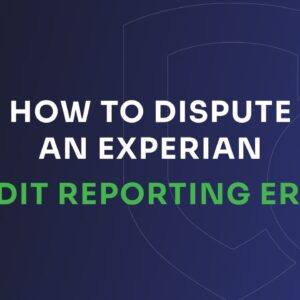
Outline:
1: Introduction – Why repaying Business Debt Is Critical
- Overwhelming loan repayments choking cash flow
- Solution: Strategic debt management tips for long-term stability
2: Understand the Nature of Your Business Loan
- Fixed vs Variable Rate Loans
- Secured vs Unsecured Loans
- Amortizing vs Balloon Loans
3: Assess Your Current Debt Situation Honestly
- List All Outstanding Debts
- Know Your APR and Term for Each Loan
- Use a Debt Repayment Calculator
4: Create a Debt Management Plan to Manage Debt
- Set Monthly Repayment Goals
- Automate Your Payments
- Prioritize High-Interest Loans First (Avalanche Method)
- Use the Snowball Method for Motivation
5: Refinance or Consolidate to Manage Debt Smarter
- When to Refinance Your Business Loan
- How Debt Consolidation Can Save You Money
- Best Platforms for Business Debt Refinancing (Lendio, Fundera, BlueVine)
6: Improve Your Business Cash Flow to Manage Debt Better
- Increase Sales through Upselling or New Products
- Reduce Operational Costs Without Cutting Quality
- Offer Early Payment Discounts to Customers
7: Use Budgeting Tools and Financial Software
- QuickBooks and Xero for Business Budgeting
- Debt Management Excel Templates
- Cash Flow Forecasting Tools
8: Avoid These Common Mistakes in Business Loan Repayment
- Making Only Minimum Payments
- Ignoring Payment Dates
- Overborrowing Without Planning
9: Manage Debt by Negotiating With Lenders
- Ask for Temporary Interest Reduction
- Restructure Your Loan
- Request Grace Periods During Slow Seasons
10: Build a Business Emergency Fund to Prevent New Debt
- Save a Percentage of Revenue Monthly
- Use High-Yield Business Savings Accounts
- Keep 3-6 Months of Operating Expenses Saved
11: Separate Business and Personal Finances
- Avoid Using Personal Credit for Business Loans
- Build Business Credit Responsibly
12: Increase Your Business Credit Score
- Pay Vendors on Time
- Dispute Errors on Credit Reports
- Keep Credit Utilization Low
13: Create Multiple Income Streams to Manage Debt Fast
- Add Services or Subscription Models
- Rent Out Business Assets
- Monetize Unused Inventory
14: Monitor Your Financial Health Monthly
- Review Debt-to-Income Ratio
- Track Loan Repayment Progress
- Adjust Plan Based on Business Performance
15: Work With a Financial Advisor or CPA
- When Professional Help Is Necessary
- How Experts Optimize Loan Strategies
16: How to Manage Debt Without Damaging Your Credit
17: Conclusion — You Can Manage Debt Efficiently with the Right Strategy
18: FAQs
- What is the best way to manage debt with multiple business loans?
- Can refinancing help reduce total repayment?
- How do I avoid defaulting on my business loan?
- Is it bad to pay off business loans early?
- What tools can help me manage business debt better?
READ MORE: 5 Simple Questions to Help Determine Your Business Financing Options
Repaying Your Business Loan Efficiently: Powerful Debt Management Tips for Success
Introduction – Why Managing Business Debt Is Critical
Repaying Your Business Loan Efficiently: If you’re struggling to keep up with repaying loans, learning how to manage debt becomes more than just a financial goal—it’s a survival tactic. Poor debt management is one of the biggest reasons small businesses fail. But here’s the good news: you can take back control.
Whether you’re drowning in interest payments or juggling multiple loans, this guide will walk you through powerful, practical tips to help you repay your business loan efficiently—without sabotaging your growth or stressing your cash flow.
Understand the Nature of Your Business Loan
Before you tackle repayment, get familiar with the terms of your loan.
Fixed vs Variable Rate Loans
- Fixed Rate loans keep your interest constant.
- Variable Rate loans may fluctuate, affecting your monthly obligations.
Secured vs Unsecured Loans
- Secured Loans use assets as collateral (e.g., equipment).
- Unsecured Loans rely on your creditworthiness, often with higher rates.
Amortizing vs Balloon Loans
- Amortizing Loans are paid off over time.
- Balloon Loans have small monthly payments and one big final payoff.
Knowing which one you’re dealing with helps you choose the right repayment strategy.
Assess Your Current Debt Situation Honestly
Before you can manage debt effectively, you need to know exactly what you’re dealing with.
List All Outstanding Debts
Write down loan amounts, interest rates, monthly payments, and payoff dates.
Know Your APR and Term for Each Loan
This helps you calculate total interest and prioritize repayment.
Use a Debt Repayment Calculator
Try tools like the NerdWallet Debt Calculator to visualize progress and interest savings.
Create a Debt Management Plan to Manage Debt
This is your battle plan to crush debt, one installment at a time.
Set Monthly Repayment Goals
Decide how much you can afford above your minimum payment.
Automate Your Payments
Late fees kill budgets. Automation keeps your credit score intact.
Prioritize High-Interest Loans First (Avalanche Method)
Pay extra on the loan with the highest rate while making minimum payments on others.
Use the Snowball Method for Motivation
Pay off the smallest loan first to build confidence—then roll that amount into the next loan.
Refinance or Consolidate to Manage Debt Smarter
Sometimes the smartest move isn’t to pay faster—but to pay smarter.
When to Refinance Your Business Loan
- Your credit score has improved.
- Interest rates have dropped.
- You want to lower monthly payments.
How Debt Consolidation Can Save You Money
Combine multiple loans into one with a lower interest rate and simplified payment.
Best Platforms for Business Debt Refinancing
Improve Your Business Cash Flow to Manage Debt Better
More cash flow = more room to pay debt and grow.
Increase Sales through Upselling or New Products
Offer packages or premium versions of your products.
Reduce Operational Costs Without Cutting Quality
Negotiate vendor contracts, switch software tools, or outsource.
Offer Early Payment Discounts to Customers
Get paid faster and boost liquidity.
Use Budgeting Tools and Financial Software
Technology is your best friend in managing business debt.
QuickBooks and Xero for Business Budgeting
These tools allow you to track income, expenses, and loan repayments in real-time.
Debt Management Excel Templates
Use free spreadsheets to build monthly repayment schedules.
Cash Flow Forecasting Tools
Helps predict future shortages before they hurt you.
Avoid These Common Mistakes in Business Loan Repayment
Learning what not to do is just as important.
Making Only Minimum Payments
This keeps you in debt longer and increases total interest paid.
Ignoring Payment Dates
Missing a payment can wreck your credit score and trigger penalties.
Overborrowing Without Planning
Don’t take on new debt until you can justify its ROI.
Manage Debt by Negotiating With Lenders
Lenders want to get paid—they may work with you if you ask.
Ask for Temporary Interest Reduction
Explain your situation and request a 3–6 month reduced rate.
Restructure Your Loan
Request longer terms for smaller monthly payments.
Request Grace Periods During Slow Seasons
Great if your business has seasonal revenue cycles.
Build a Business Emergency Fund to Prevent New Debt
Rainy days will come—be ready.
Save a Percentage of Revenue Monthly
Even 5–10% can go a long way over time.
Use High-Yield Business Savings Accounts
Let your idle funds grow while they wait.
Keep 3–6 Months of Operating Expenses Saved
This buffer helps avoid panic borrowing.
Separate Business and Personal Finances
Co-mingling is a rookie mistake that leads to chaos.
Avoid Using Personal Credit for Business Loans
It risks your personal credit and can limit future business funding.
Build Business Credit Responsibly
Open trade lines, pay on time, and keep utilization under 30%.
Increase Your Business Credit Score
A better score means better future terms.
Pay Vendors on Time
Many suppliers report to business credit bureaus.
Dispute Errors on Credit Reports
Check regularly and fix incorrect late payments or balances.
Keep Credit Utilization Low
Try to use less than 30% of your credit limits.
Create Multiple Income Streams to Manage Debt Fast
More income = more payment power.
Add Services or Subscription Models
Recurring revenue gives financial stability.
Rent Out Business Assets
Got unused equipment? Put it to work.
Monetize Unused Inventory
Clear storage space and make money at the same time.
Monitor Your Financial Health Monthly
Staying on top of your numbers is key.
Review Debt-to-Income Ratio
Keep it under 50% to stay healthy in lenders’ eyes.
Track Loan Repayment Progress
Use charts or dashboards to stay motivated.
Adjust Plan Based on Business Performance
Scale payments up or down based on revenue.
Work With a Financial Advisor or CPA
Let’s be real—managing business debt can feel like walking through a financial minefield blindfolded. That’s where a financial advisor or CPA becomes your secret weapon. If your goal is to manage debt smartly, avoid penalties, and improve your loan repayment strategy without costly mistakes, hiring a pro is often a game-changer.
Why Working with a Financial Advisor or CPA Makes a Difference
You wouldn’t perform surgery without a doctor, right? Well, navigating complex debt structures, tax implications, and repayment plans without a certified expert is pretty much the same thing.
Here’s why these professionals are invaluable when managing business loan repayments:
1. Objective Assessment of Your Financial Health
A CPA (Certified Public Accountant) or financial advisor will:
- Review your balance sheet and cash flow statements
- Spot inefficiencies in spending
- Assess your debt-to-income ratio
- Identify red flags that could affect your creditworthiness or loan renewals
✅ Result: You get a crystal-clear picture of your financial standing and a roadmap for improving it.
2. Debt Optimization Strategy Tailored to Your Business
They don’t give cookie-cutter advice. A good advisor helps you:
- Prioritize high-interest debts
- Recommend refinancing or consolidation options
- Structure payments to preserve your credit score
- Time payments to align with your cash flow cycle
💡 Pro Tip: A CPA can also help restructure amortization schedules to reduce year-end tax liabilities.
3. Access to Better Financing and Refinancing Opportunities
CPAs and financial planners often have professional networks that include:
- Bank loan officers
- Alternative lenders
- Peer-to-peer lending platforms
✅ That means they can:
- Introduce you to competitive refinancing options
- Help you gather the perfect documentation
- Negotiate better terms on your behalf
4. Strategic Tax Planning on Business Loan Interest
Did you know that business loan interest is often tax-deductible? A CPA ensures you:
- Properly categorize interest payments
- Maximize deductions
- Avoid tax penalties
- Plan your repayments around tax seasons for the biggest savings
📌 Example: Structuring loan repayments before Q4 can help reduce taxable profits in a high-income year.
5. Business Budgeting and Forecasting
Beyond debt, financial advisors build comprehensive budgets and forecasting models. These tools help you:
- Predict cash shortages before they happen
- Set aside reserves for future loan payments
- Make data-driven financial decisions
💻 Many advisors use advanced tools like QuickBooks, Xero, or custom Excel dashboards to automate these forecasts and keep your finances on track.
6. Preventing Default and Protecting Your Credit Score
Sometimes businesses hit a rough patch. A financial advisor:
- Acts as your negotiator with creditors or lenders
- Helps you apply for temporary payment relief
- Prevents missed payments from turning into credit-killing defaults
📞 Pro Tip: Advisors know who to call and what to say when you’re facing late payments. They’ve handled it before.
7. Planning for Growth While Managing Debt
Good advisors don’t just help you get out of debt—they help you grow responsibly while staying out of debt.
They help you:
- Plan capital expenditures (like new equipment) without draining cash flow
- Create cost-efficient expansion strategies
- Fund new opportunities without overleveraging
✅ This creates a win-win: Growth and stability.
💼 How to Choose the Right Financial Advisor or CPA
If you’re going to bring someone into your books, they better be worth it. Here’s how to find the right one:
✅ Credentials to Look For
- CPA (Certified Public Accountant) — Best for taxes and financial reporting
- CFP (Certified Financial Planner) — Best for long-term planning and debt management
- EA (Enrolled Agent) — Specializes in tax representation before the IRS
✅ Industry Experience
Choose someone who understands small businesses, your industry, and your financial structure (e.g., LLC, S-Corp, sole proprietorship).
✅ Transparency and Communication
They should:
- Be clear about pricing (hourly, project-based, retainer)
- Offer monthly or quarterly reviews
- Be accessible when you need guidance
✅ Technology Savvy
Your advisor should use modern tools to:
- Track expenses
- Generate real-time reports
- Collaborate with you remotely if needed
🔑 Final Thought on Financial Advisors & CPAs
Think of a financial advisor or CPA as your business’s CFO—whether you’re a startup or scaling enterprise. They help you manage debt, plan ahead, avoid tax traps, and position your business for lasting success.
You don’t need to wait until you’re “in trouble” to hire one. In fact, hiring an advisor before you’re in financial distress is the smartest investment you’ll ever make.
Would you like me to include this expanded section into your final downloadable document? I can also prep a PDF or Word version with all sections included so far.
How to Manage Debt Without Damaging Your Credit
One of the biggest fears business owners have when dealing with debt is: “What if managing this debt ruins my credit?” That’s a valid concern. After all, your business credit profile is crucial for securing future funding, leasing property, or even winning contracts. But the good news? You can manage debt effectively without damaging your credit—if you do it right.
Let’s break it down.
1. Always Pay On Time — Even the Minimum
Payment history accounts for a huge portion of your credit score (up to 35% for personal credit and 50% for business credit). One late payment can damage your score for months.
✅ Action Tip:
Set up automatic payments through your lender or bank to avoid accidental missed due dates.
💡 Pro Tip: Even if you can’t pay the full amount, pay at least the minimum due to protect your score and avoid late penalties.
2. Don’t Max Out Credit Lines or Business Cards
Credit utilization—the percentage of your credit limit you’re using—also heavily affects your score. High utilization signals risk to lenders.
✅ Keep usage below 30% of your total available credit. For example, if your business credit card has a $10,000 limit, try not to carry more than $3,000 in balance.
💡 Advanced Strategy: Ask for a credit limit increase to improve your utilization ratio—just be careful not to spend more because of it.
3. Avoid Closing Old Credit Accounts Too Soon
It might feel smart to “clean up” unused business cards or old credit lines—but doing so can actually lower your credit score.
Why? Because closing accounts:
- Shortens your average account age
- Reduces your available credit, increasing utilization
✅ Instead: Keep accounts open, even if you only use them occasionally for minor purchases and pay off the balance immediately.
4. Keep Personal and Business Credit Separate
Using personal credit to fund your business can be risky. Not only does it blur financial boundaries, but defaulting on business-related payments can tank your personal score.
✅ Apply for business credit cards, loans, and vendor accounts using your business EIN and legal structure. This helps build a solid business credit profile, separate from your personal finances.
5. Refinance Instead of Missing Payments
If your current loan has become unmanageable, don’t default—refinance. Many lenders offer lower interest rates or extended terms to make repayments easier.
Platforms like:
…can help you compare refinancing options to reduce pressure without affecting your credit negatively.
6. Negotiate Before You Miss a Payment
Missed payments hit your credit like a truck—but here’s the secret: lenders want to help you stay current.
✅ Be proactive. Contact your lender and ask for:
- Temporary payment deferral
- Interest rate reduction
- Loan restructuring
💡 Pro Tip: Get all changes in writing to avoid future disputes.
7. Monitor Your Credit Reports Regularly
Mistakes happen. And if there’s an error on your report—like a wrongly recorded missed payment or balance—you want to catch it fast.
✅ Use services like:
- Nav (business credit monitoring)
- Experian Business
- AnnualCreditReport.com (for personal credit)
Set alerts for changes, and dispute inaccuracies immediately.
8. Use Business Credit Cards Strategically
Business credit cards can help build your credit—but only if used responsibly.
✅ Tips:
- Use them for planned, recurring expenses (like software subscriptions)
- Pay them off in full each month
- Avoid cash advances—they come with high fees and no grace period
9. Diversify Your Credit Mix (Responsibly)
Having multiple types of credit—like a term loan, a credit card, and a line of credit—can improve your credit score if you manage them well.
✅ But don’t open new accounts just to boost your mix. Each new credit inquiry and account lowers your average account age, which can hurt your score temporarily.
10. Don’t Apply for Too Much Credit at Once
Every loan or credit card application triggers a hard inquiry, which can ding your score slightly.
✅ Space out your applications.
✅ Use soft-pull prequalification tools (available on platforms like Nav and Lendio) to check eligibility without affecting your credit.
🚨 Bonus: Signs You’re Managing Debt Without Hurting Credit
- You haven’t missed a payment in 12+ months.
- Your credit utilization is under 30%.
- Your credit score is trending upward.
- Your credit mix includes both revolving and installment credit.
🔑 Final Thought
Managing debt is like walking a tightrope—you want to balance timely repayments with responsible borrowing. But if you follow the tips above, you’ll manage debt without damaging your credit, and in many cases, you’ll come out the other side with a stronger credit profile than when you started.
It’s not just about survival—it’s about building long-term financial credibility.
Would you like this section added to your full Word document, or should I prepare a downloadable version including all content so far?
READ MORE: How to Improve Your Chances of Getting Approved for a Business Loan: Proven, Powerful Strategies
Conclusion — You Can Manage Debt Efficiently with the Right Strategy
The truth? Business debt isn’t the enemy—poor management is. If you follow these tips on how to manage debt, you can reduce stress, boost profits, and build a solid financial foundation for your business.
Debt is a tool—use it wisely, and it will work for you, not against you.
FAQs
1. What is the best way to manage debt with multiple business loans?
Use a debt management plan. Either the avalanche method (highest interest first) or consolidation into one low-interest loan is ideal.
2. Can refinancing help reduce total repayment?
Yes, especially if you qualify for a lower interest rate or a longer repayment term. Always compare offers.
3. How do I avoid defaulting on my business loan?
Set up autopay, build an emergency fund, and contact your lender at the first sign of trouble to renegotiate terms.
4. Is it bad to pay off business loans early?
Not always. Some loans have prepayment penalties, so read your agreement. But in most cases, early payoff saves interest.
5. What tools can help me manage business debt better?
Try QuickBooks, Xero, Mint for Business, and Excel-based repayment trackers. Also, Lendio and Nav offer financial dashboards.








